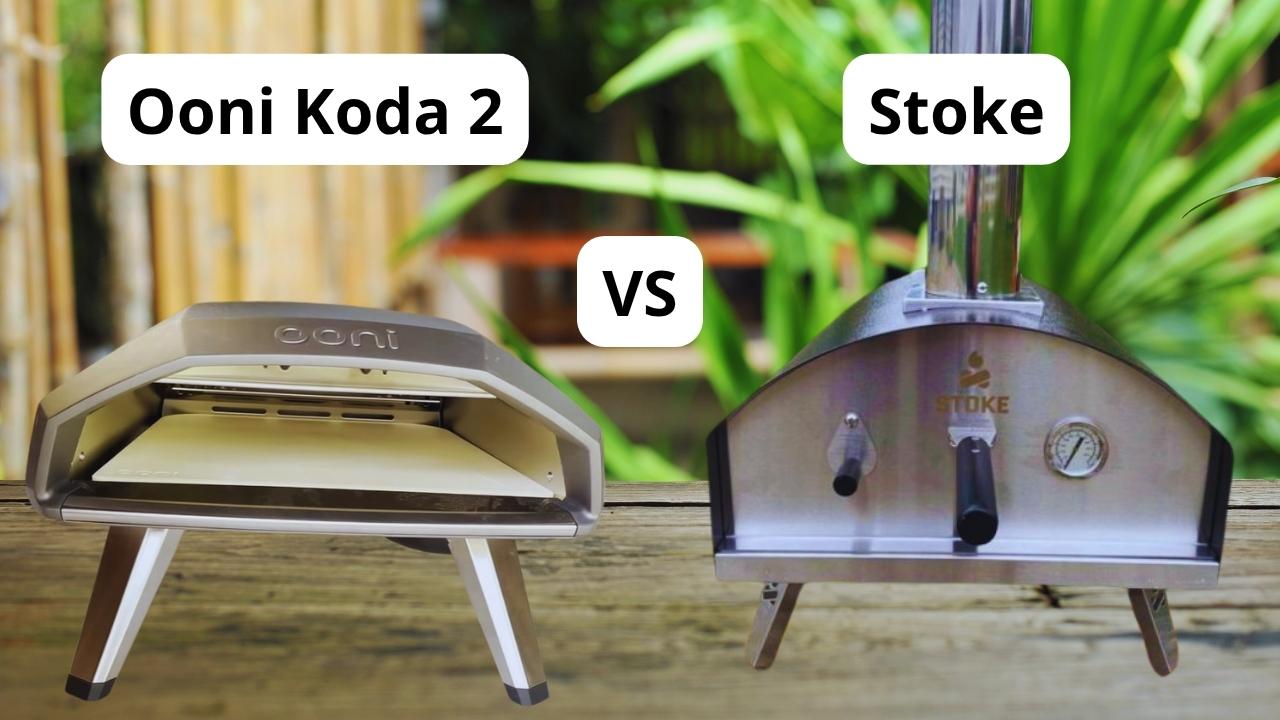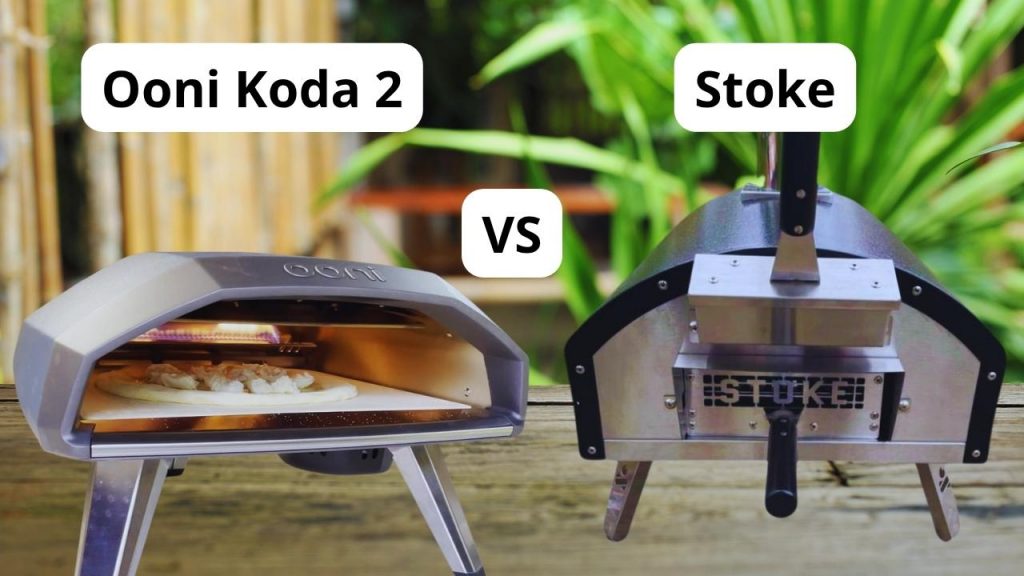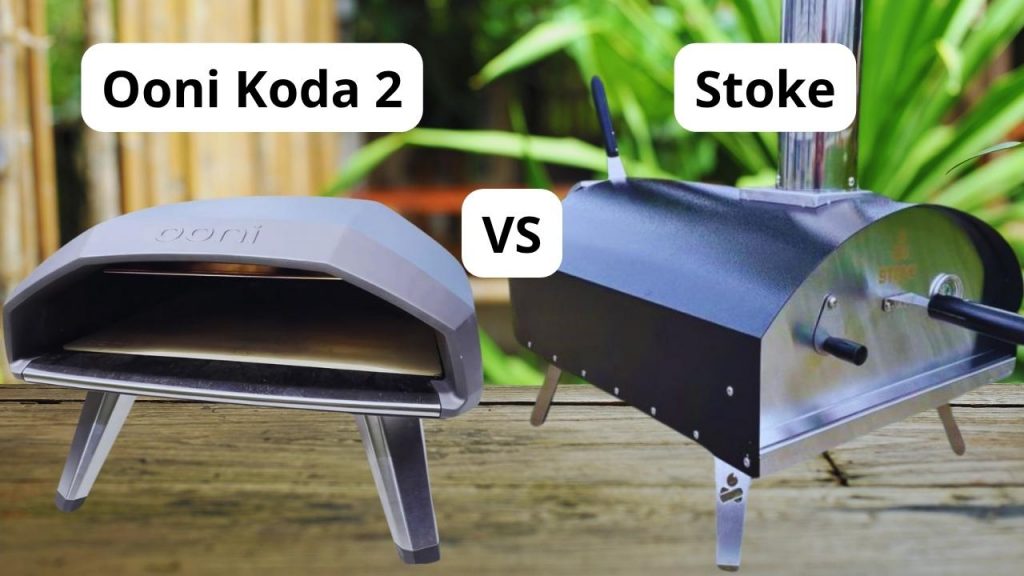As a restaurant chef with over 10 years of experience at my own kitchen, Dequte Restaurant LironBoylston, I’ve tested countless pizza ovens in both professional and home-style setups. In this article, I’m comparing the Ooni Koda 2 and the Stoke Pizza Oven—two models I’ve personally used in my kitchen. I evaluated both ovens based on quality and materials, temperature control, shape, first-time usage impressions, power source, size, ease of cleaning, and most importantly, how they performed in a real pizza cooking test. (If you’re curious about the full breakdown of my testing process, feel free to read my dedicated article: How We Test Pizza Ovens.)
The Ooni Koda 2 is Ooni’s latest gas-powered model, known for its rapid heat-up time, advanced G2 Gas Technology™, and smart connectivity features.
The Stoke Pizza Oven aims to offer a solid and affordable outdoor pizza experience with multi-fuel capabilities and a simple, user-friendly design.
I’ve put the Ooni Koda 2 and the Stoke Pizza Oven to the test, and this article covers the detailed comparison.
Lastly, a quick heads-up: this article contains affiliate links. If you decide to purchase through them, I’ll earn a small commission at no extra cost to you—and your support truly helps keep this blog alive and running.
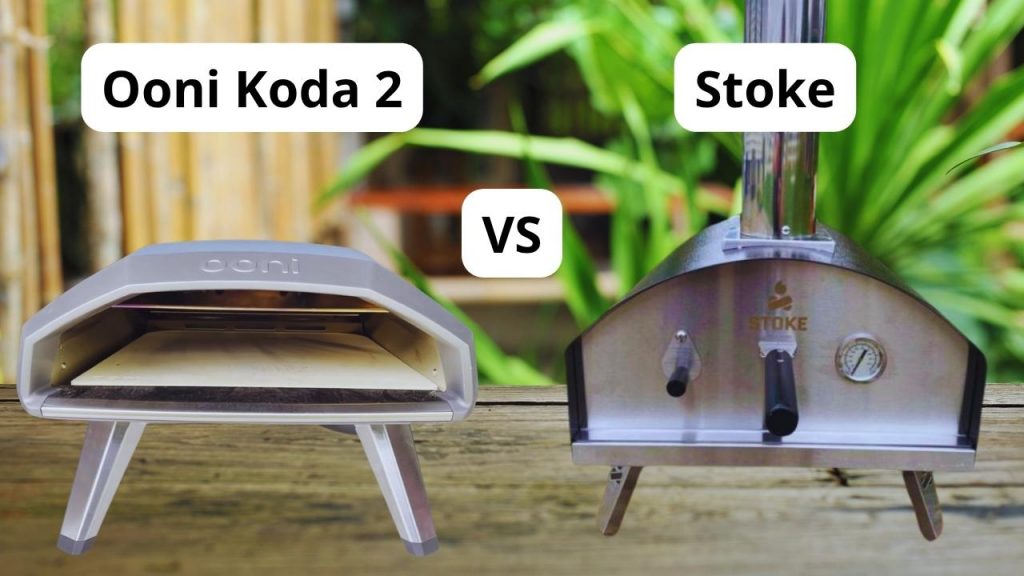
Ooni Koda 2 VS Stoke: Quality and Materials
| The Ooni Koda 2 is built with premium die-cast aluminum and a thick cordierite stone that retains heat exceptionally well. Everything from the folding legs to the burner feels durable and thoughtfully engineered. |
The Stoke Pizza Oven is made from serviceable materials and appears durable, but its parts feel more basic. It lacks the refined construction of premium ovens like the Ooni Koda 2.
|
Ooni Koda 2 VS Stoke: Temperature Control
| Ooni Koda 2 uses G2 Gas Technology™ for 200% better heat distribution than previous models. It reaches 950°F in just 15 minutes and holds temperature consistently across multiple pizzas. |
Stoke Pizza Oven claims it can reach 900°F, but in our test, it peaked at around 700°F after 45 minutes. Weather and wood type had a noticeable impact on heat performance.
|
Ooni Koda 2 VS Stoke: Shape
| The Ooni Koda 2 features a sleek, low-profile rectangular shape that’s optimized for airflow and even cooking. Its compact design enhances portability and heat retention. |
The Stoke Pizza Oven has a traditional dome-style design, but its thick internal wall between the flame and stone acts as a heat buffer, slowing down performance.
|
Ooni Koda 2 VS Stoke: First-Time Usage Impressions
| Unboxing the Ooni Koda 2 felt like opening a premium kitchen tool. Assembly took under 10 minutes, and it was ready to cook almost immediately. Every detail shows quality. |
The Stoke Pizza Oven was easy to assemble in 10 minutes and beginner-friendly, but the materials felt modest. It’s functional but less polished than the Ooni Koda 2.
|
Ooni Koda 2 VS Stoke: Power Source
| The Ooni Koda 2 is exclusively gas-powered, which simplifies operation. It connects easily to propane for quick, clean, and consistent heat without ash or flare-ups. |
The Stoke Pizza Oven is available in both wood and gas versions. I tested the wood model, which offers great flavor but demands more time, fuel, and hands-on fire management.
|
Ooni Koda 2 VS Stoke: Size
| Ooni Koda 2 weighs 35 lbs (16 kg) and has a 14-inch stone. It’s highly portable with folding legs and compact enough for patios or travel use. |
Stoke Pizza Oven weighs just over 40 lbs. It’s compact too, but slightly bulkier than the Ooni Koda 2, and less convenient to transport due to its shape and structure.
|
Ooni Koda 2 VS Stoke: Ease of Cleaning
| With no ash and a gas-only setup, the Ooni Koda 2 is extremely easy to clean. The pyrolytic self-cleaning at high temps burns off residue. Just wipe the stone and go. |
Stoke Pizza Oven requires full cooldown before disassembly and manual cleaning of ash. The parts are easy to remove, but cleanup is messier than with the Ooni Koda 2.
|
Pizza Cooking Test: Ooni Koda 2 vs Stoke Pizza Oven

To put both ovens to the test, I prepared the same Margherita pizza in each using my go-to dough and fresh ingredients. Here’s how they performed under real kitchen conditions at Dequte Restaurant LironBoylston.
The Ooni Koda 2 reached 950°F in just 15 minutes using propane. Once the stone was fully heated, I launched the pizza—and exactly 60 seconds later, it came out perfectly cooked. The crust had a beautiful leopard char, the cheese was melted evenly, and the sauce kept its vibrant flavor without overcooking. Most importantly, there were no hot or cold spots—just balanced, even heat throughout. I didn’t need to rotate the pizza at all. It was a textbook Neapolitan-style bake on the very first try.
The Stoke Wood-Fired Pizza Oven, on the other hand, took roughly 45 minutes to reach a max temperature of about 700°F. I followed the same process, but the pizza took just over 2 minutes to finish. The top was nicely browned and the cheese cooked well, but the bottom crust lacked crispness and that golden char I aim for. The flavor was still good—thanks to the wood smoke—but it didn’t match the finish or speed of the Ooni Koda 2. Achieving the ideal bake required more attention and still left room for improvement, especially on the crust texture.
Both ovens made a tasty Margherita, but the Ooni Koda 2 delivered professional-level results faster, more evenly, and with less guesswork. The Stoke produced solid flavor with its wood fire, but needed more time and effort to get close to the same quality.
How We Tested
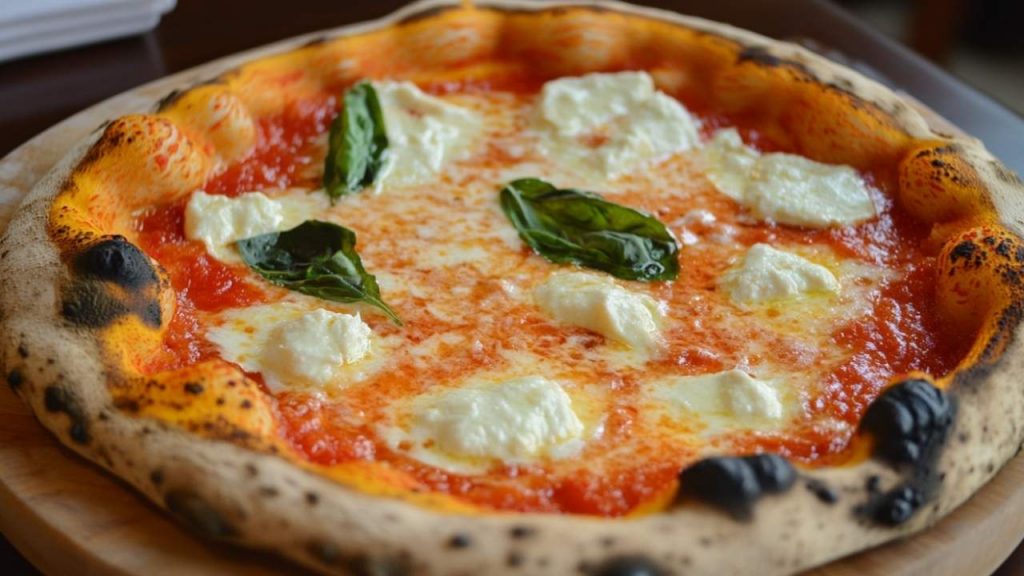
All testing was done in a real working environment at Dequte Restaurant LironBoylston, where I’ve spent over a decade perfecting the craft of pizza. To keep things consistent, I used the same dough, the same ingredients, and the same method for each oven: a classic Margherita pizza—ideal for evaluating crust texture, melt quality, and even heat distribution.
Both the Ooni Koda 2 and Stoke Wood-Fired Pizza Oven were tested over multiple sessions. I measured how long each oven took to reach its highest stable temperature using an infrared thermometer placed on the pizza stone. Once fully preheated, I launched pizzas back-to-back to see how well the ovens maintained heat and performed under repeated use.
I also noted how much effort was required to manage temperature, how easy each oven was to operate during service, and how well they handled cooking a pizza from raw dough to finished pie. I judged results not just by timing but by quality—looking closely at the browning of the crust, balance of the bake, melt of the cheese, and overall taste.
These weren’t first impressions or backyard one-offs—this was a hands-on, professional kitchen evaluation designed to see which oven could consistently deliver results worthy of a restaurant setting. If you’re interested in the full methodology I use across all my reviews, check out my article “How I Test Pizza Ovens.”
Final Thoughts
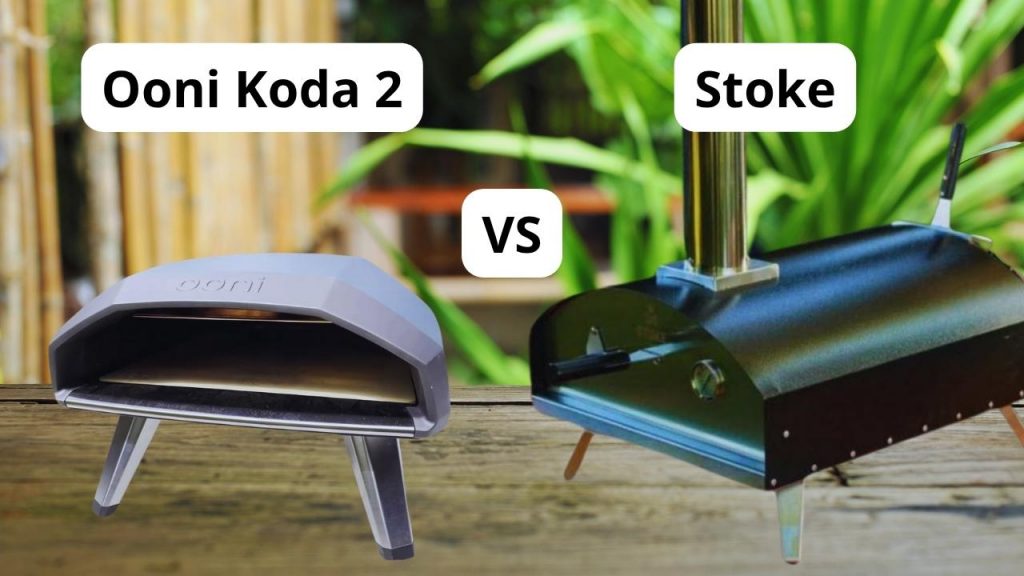
Both the Ooni Koda 2 and the Stoke Wood-Fired Pizza Oven bring solid performance to the table, each with its own strengths. If you prefer precision, modern design, and speed, the Ooni Koda 2 is hard to beat—it’s fast, reliable, and delivers restaurant-quality results with minimal effort. On the other hand, the Stoke Pizza Oven is a good choice for those who enjoy the hands-on process and smoky flavor that only a wood fire can offer, even if it requires more patience and fine-tuning.
At the end of the day, it’s your choice which oven suits your cooking style best.
If you decide to buy one, I’d truly appreciate it if you use my referral links—it won’t cost you anything extra, but it helps support this blog and the time I put into these in-depth tests.
Here’s the Ooni Koda 2 referral link and the Stoke Pizza Oven referral link. Thank you!

